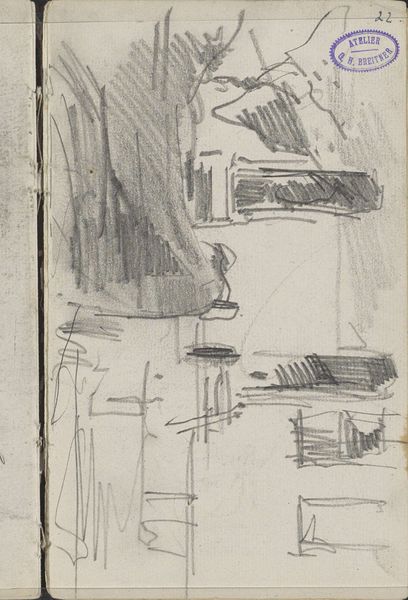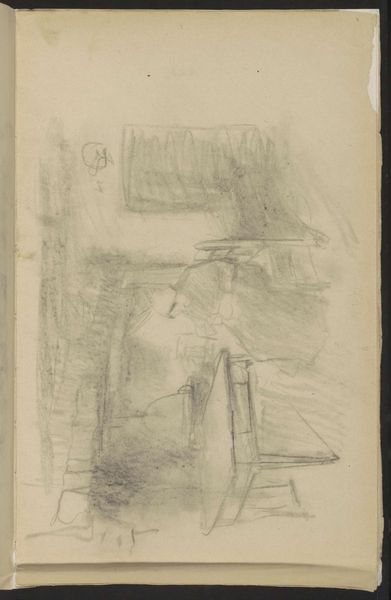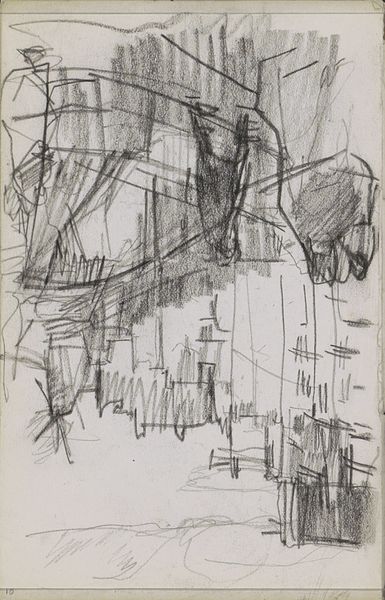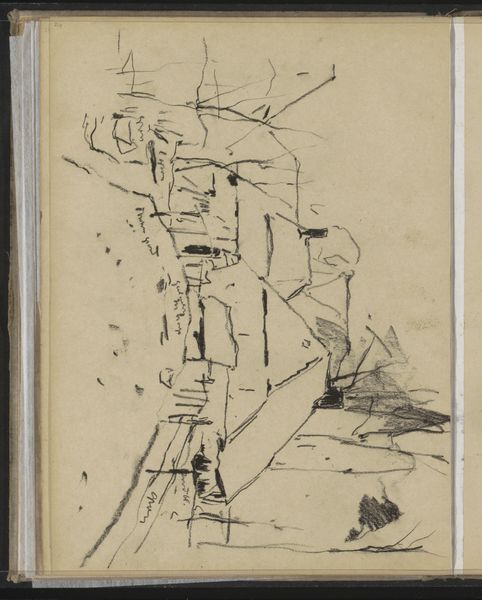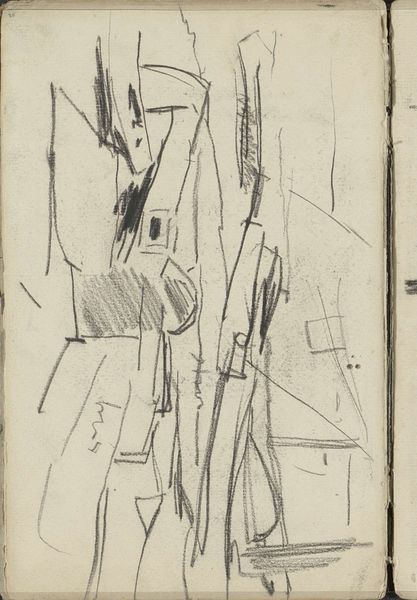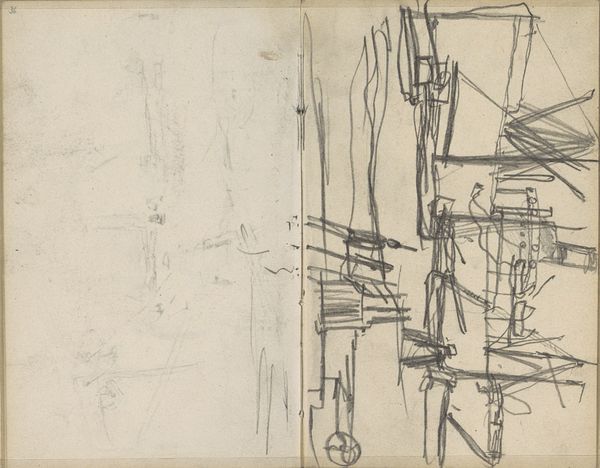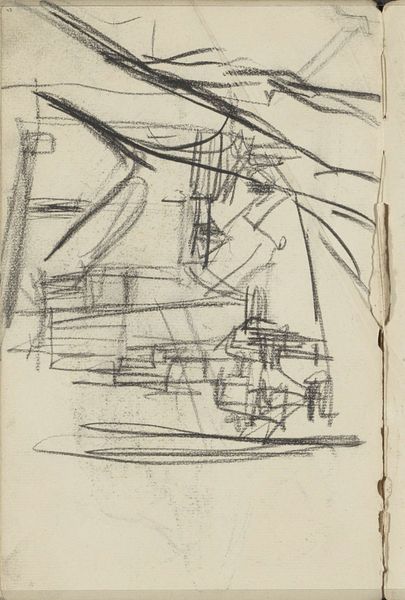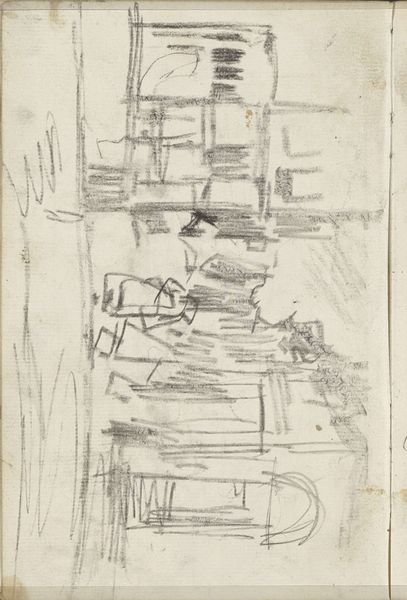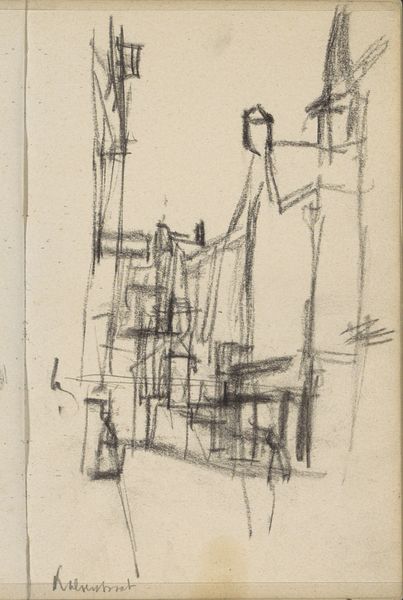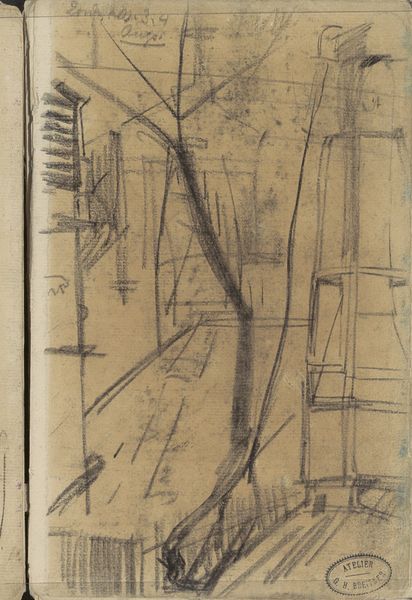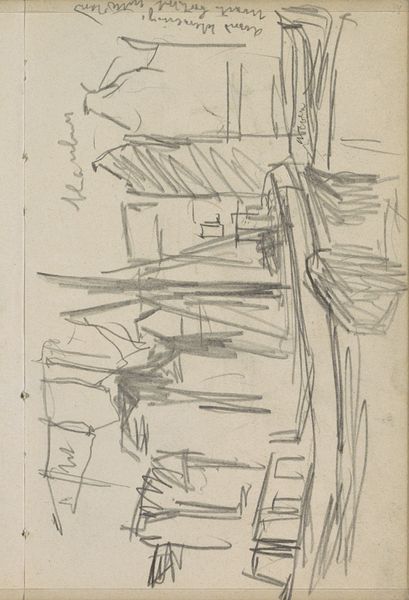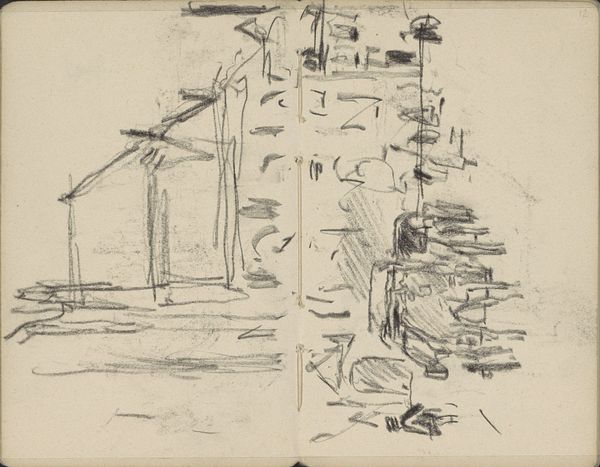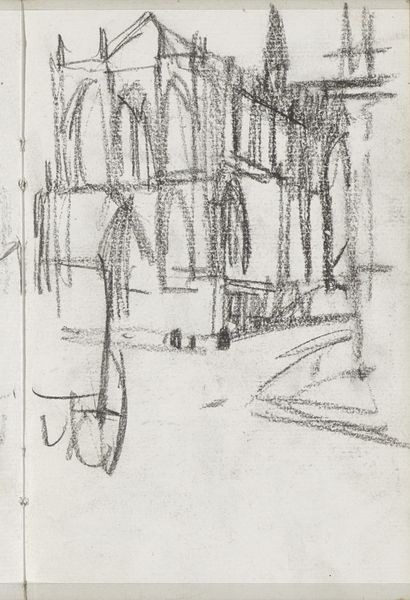
Copyright: Rijks Museum: Open Domain
Curator: Let’s turn our attention to George Hendrik Breitner's "Architectuurstudies," dating roughly from 1886 to 1923. It’s a graphite drawing, currently held here at the Rijksmuseum. Editor: My first impression is how immediate this feels. It’s a raw, almost urgent cityscape, more about capturing a fleeting impression than architectural detail. You can almost feel the artist quickly sketching. Curator: That's a key aspect of Breitner’s work. He moved away from traditional studio painting, embracing the immediacy of the streets and the lives of ordinary people. The Realism movement strongly influenced this. Editor: I see that. It's about conveying the grittiness of urban existence, a working class sensibility, rather than celebrating bourgeois ideals. Graphite’s texture enhances this roughness—it looks so unrefined. Did he do more than a drawing to depict these scenes? Curator: Absolutely. He captured many photographs before making paintings, drawings, and watercolors, using photography as a tool to understand composition and capture a moment in time before representing this moment. Editor: You can see a contrast. This drawing style evokes sketches but isn't necessarily one, where a lot is achieved through subtle differences in tonal value. The sharp edges give depth to what feels like a bustling, quickly paced life of urban spaces. Curator: Indeed. And consider the social context. The rapid urbanization of Amsterdam during this period changed social conditions, creating challenges concerning infrastructure, working conditions, and everyday life, and he sought to represent life as is without embellishments. His imagery thus challenged prevailing social ideals. Editor: The architecture becomes less about aesthetic pleasure and more a marker of place, almost indistinguishable from other structural components of urban life. I can also almost smell the materials through his textures - brick, stone, smoke and soot. This really speaks to the materiality of daily life back then! Curator: It is compelling how Breitner made this everyday labor so compelling, thus opening eyes about social circumstances while democratizing the purpose of painting. His urban scenes became an important part of Amsterdam’s visual and political landscape. Editor: Looking closer now, there is so much depth achieved here through such an understated process! Thank you for pointing this out. Curator: Indeed. The painting offers us so many views to revisit.
Comments
No comments
Be the first to comment and join the conversation on the ultimate creative platform.
